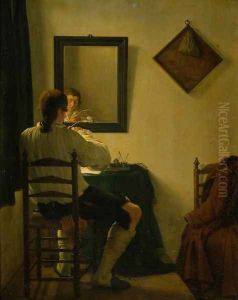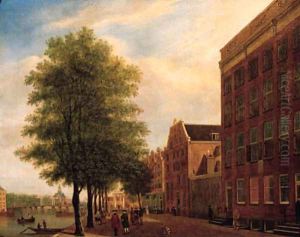Jan, II Ekels Paintings
Jan Ekels the Younger was a Dutch painter born on May 27, 1759, in Amsterdam, the Netherlands. He was part of a family of artists, with his father, Jan Ekels the Elder, also being a notable painter. Ekels the Younger specialized in genre painting, capturing scenes of everyday life, and was particularly known for his detailed depiction of interior scenes with figures. His style was influenced by the Dutch Golden Age of painting, although he lived well after this period.
Ekels received his artistic training from his father and possibly from other contemporary artists. He became a member of the Amsterdam artists' guild, reflecting his recognition and integration into the artistic community of his time. Despite his relatively short life, he was productive and his works were appreciated for their fine detail, composition, and his ability to capture the texture of materials, such as the play of light on different surfaces.
He lived during a time when Dutch art was in a period of transition, with the tastes and artistic styles evolving as the Netherlands faced political and economic changes. Ekels' work provides a glimpse into the domestic life of the Dutch middle class during the late 18th century. His paintings often included a moralizing element, which was a common theme in Dutch genre paintings. This was achieved through the depiction of the virtues and vices of his subjects, encouraging the viewer to reflect on their own moral conduct.
Jan Ekels the Younger passed away at the young age of 34, on December 8, 1793, in Amsterdam. His early death meant that his oeuvre was not as extensive as some of his contemporaries, but his work was nevertheless influential and continues to be studied for its artistic merit and historical value. His paintings can be found in various museum collections, including the Rijksmuseum in Amsterdam, which helps to preserve his legacy and allows a wider audience to appreciate his contribution to Dutch art history.

